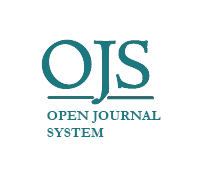TECHNOLOGY ACCEPTANCE MODEL AS A PREDICTOR OF SIMDA USAGE
DOI:
https://doi.org/10.22219/jrak.v9i1.7175Keywords:
Sistem Informasi Manajemen Daerah (SIMDA), Technology Acceptance Model theory (TAM), Behavior of SIMDA Usage.Abstract
The study aims to analyze behavioral aspects, especially individual factors that influence the use of SIMDA using the Technology Acceptance Model theory (TAM). The population in this study were all financial managers in all Organisasi Perangkat Daerah (OPD) in the Pemerintah Kabupaten Pasuruan with a total sample of 282 respondents. The samples selected by judgment sampling method. Analysis technique using PLS (Partial Least Square) with WarpPLS 5.0 software The findings of this study, first, job relevance and result demonstrability is positively related to perceived usefulness. Second, perceived ease of use, perceived enjoyment, and perceived usefulness is positively related to attitude. Third, perceived usefulness and attitude is positively related to behavioral intention. Furthermore, behavioral intention is positively related to behavior of SIMDA usage.
Downloads
Downloads
Published
Issue
Section
License

Jurnal Reviu Akuntansi dan Keuangan is licensed under a Creative Commons Attribution-NonCommercial-ShareAlike 4.0 International License.
Authors who publish with this journal agree to the following terms:
- Authors retain copyright and grant the journal right of first publication with the work simultaneously licensed under a Creative Commons Attribution-NonCommercial-ShareAlike 4.0 International License that allows others to share the work with an acknowledgement of the work's authorship and initial publication in this journal.
- Authors are able to enter into separate, additional contractual arrangements for the non-exclusive distribution of the journal's published version of the work (e.g., post it to an institutional repository or publish it in a book), with an acknowledgement of its initial publication in this journal.
- Authors are permitted and encouraged to post their work online (e.g., in institutional repositories or on their website) prior to and during the submission process, as it can lead to productive exchanges, as well as earlier and greater citation of published work (See The Effect of Open Access).










